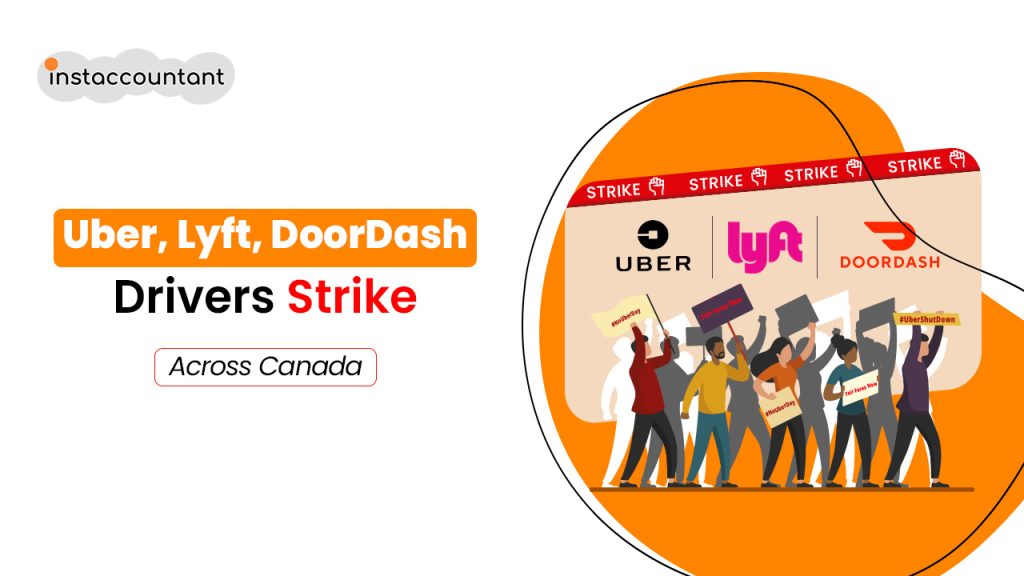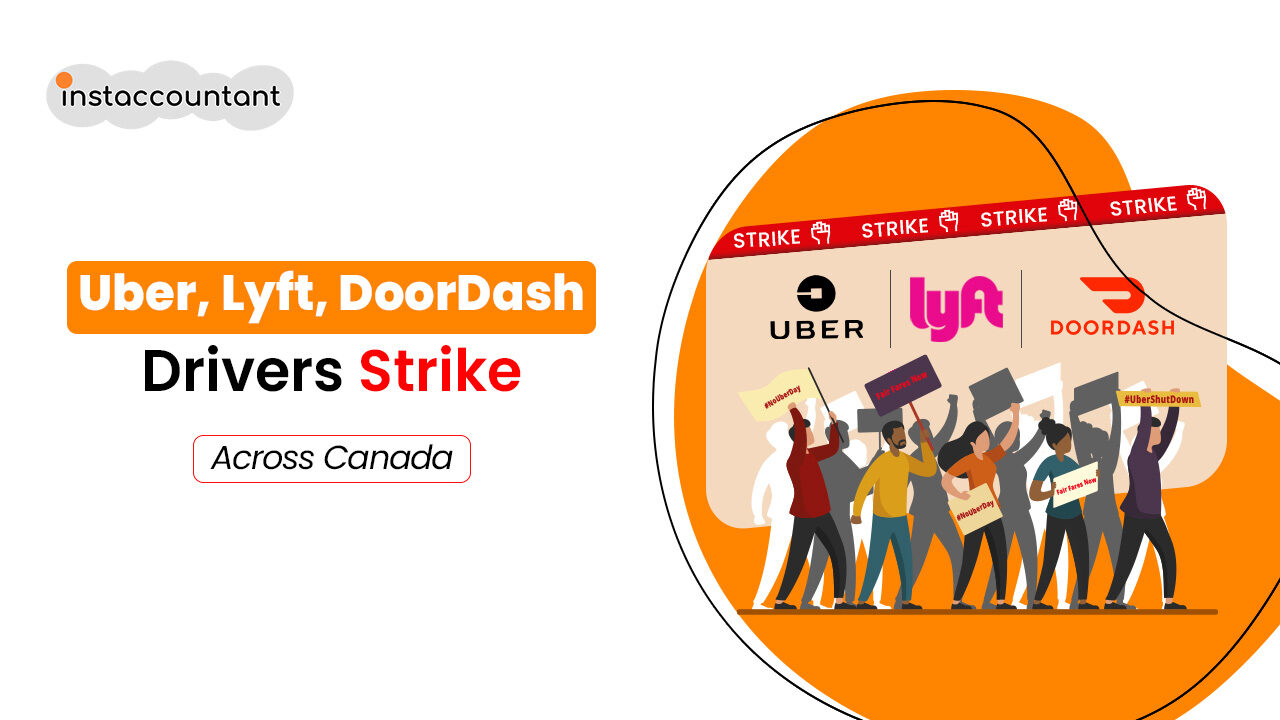Uber, Lyft, DoorDash and other food delivery drivers in Toronto, Vancouver and across Canada joined a global strike on February 14, 2024, to demand fair wage and better working conditions. The strike was organized by RideFairTO, a group that represents drivers’ interests. They claim that Uber drivers in Toronto earn only $6.37 per hour after expenses, which is far below the minimum wage of $16.55 in Ontario.

Why Uber Drivers on Strike in Toronto Canada
The root of the strike lies in the classification of Uber drivers as independent contractors rather than employees. This means that they are not entitled to benefits such as health insurance, sick leave, or vacation pay. It also means that that they have to cover the costs of gas, insurance, and car loan payments themselves, which can eat up a large chunk of their earnings. While the flexibility of working as an independent contractor may initially seem appealing, it becomes meaningless if the earnings are insufficient to sustain a livelihood.
Another issue raised by drivers is that Uber’s calculation of pay only includes the time spent with a customer in the car. This fails to account for the considerable amount of time drivers spend waiting for fares. As a result, the actual hourly wage earned by drivers may be significantly lower than what Uber advertises.
The current formula used by ride-sharing platforms like Uber simply does not add up for many drivers. They are left grappling with the challenges of earning a living while dealing with the mounting expenses associated with their profession.
Uber Canada argues that this classification gives drivers more flexibility and autonomy over their work schedules and locations. However, this flexibility comes at a high price for drivers who struggle to make ends meet with low and unpredictable earnings.
The Global Protest Against Uber
The strike in Canada was part of a larger movement of drivers across the world who are demanding better treatment from Uber and other ride-hailing and delivery companies. In the United States, the United Kingdom, and Canada, drivers have staged protests, filed lawsuits, and lobbied for legislation to recognize their rights as workers.
The drivers’ demands vary from country to country, but they generally include:
- A living wage that covers expenses and provides a decent income
- Recognition as employees with full rights and benefits
- Transparency and accountability from the platforms
- A voice and representation in decision-making processes
In Canada, the strike was supported by several labor unions and advocacy groups who called on the federal and provincial governments to regulate the gig economy and protect workers’ rights. They also urged customers to boycott Uber and other platforms until they improve their policies and practices.
What are Uber’s Responses to the Strike
Uber Canada denied the claims made by RideFairTO and said that the median earnings for Toronto drivers were $33.35 per engaged hour, which is the time spent on trips with passengers or on the way to pick them up. However, this does not account for the time spent waiting for requests, driving to hotspots, or dealing with traffic and parking issues.
In Vancouver, Uber and Lyft drivers face similar challenges. Uber said that Vancouver drivers made about $24.38 per session hour, which is the time spent online on the app. However, this also does not include the expenses and downtime that drivers incur.
Lyft announced some changes to improve drivers’ income, such as guaranteeing 70% of fares each week and providing more transparent fee structures. However, these measures may not be enough to address the underlying problems of the gig economy.
However, these responses have not satisfied the drivers who say that they do not reflect the reality of their work. They say that Uber’s calculations of earnings do not account for expenses or downtime between rides. They also say that Lyft’s changes are not enough to ensure a living wage for drivers.
The Future of Gig Economy in Canada
The strike has drawn attention to the plight of Uber drivers and other gig workers who face precarious and exploitative working conditions. It has also raised questions about the role and responsibility of companies like Uber in shaping the future of work and society.
However, the strike also faced some challenges and limitations. Some drivers could not afford to participate or feared retaliation from the platforms. Some customers were unaware or indifferent to the drivers’ plight or opted for alternative services. Some governments were reluctant or slow to intervene or sided with the platforms.
Some experts argue that it is time for governments to step in and categorize Uber drivers as employees. This change would not only provide drivers with a guaranteed minimum wage but also potentially improve other aspects of their working conditions. The threat of such government intervention may even incentivize Uber, Lyft and other rideshare platforms to reevaluate their compensation models.
The gig economy is not going away anytime soon, as more people turn to it for work or convenience. Therefore, it is crucial to find ways to ensure that gig workers are treated fairly and humanely, and that they have a say in shaping their own future.




